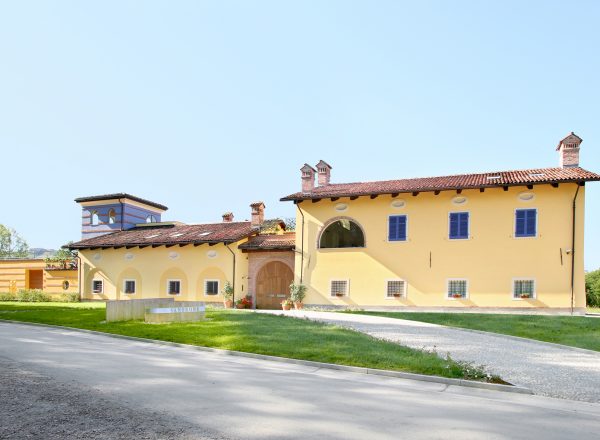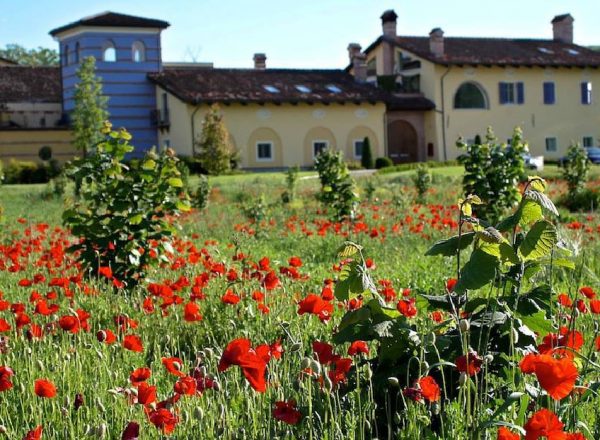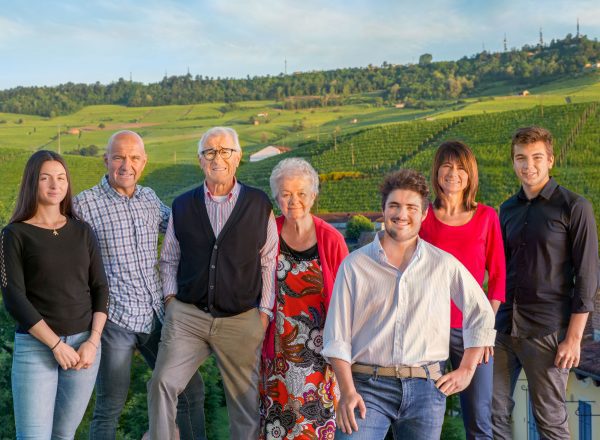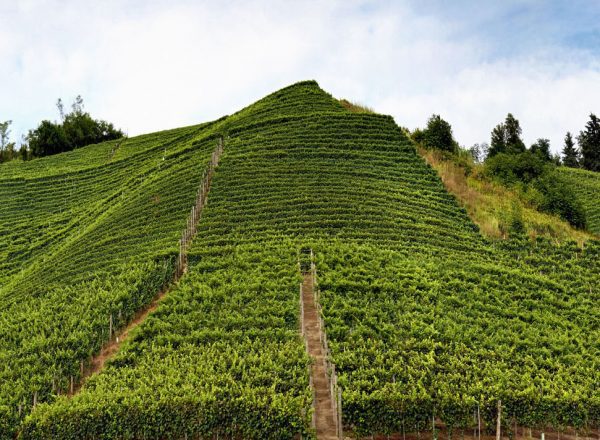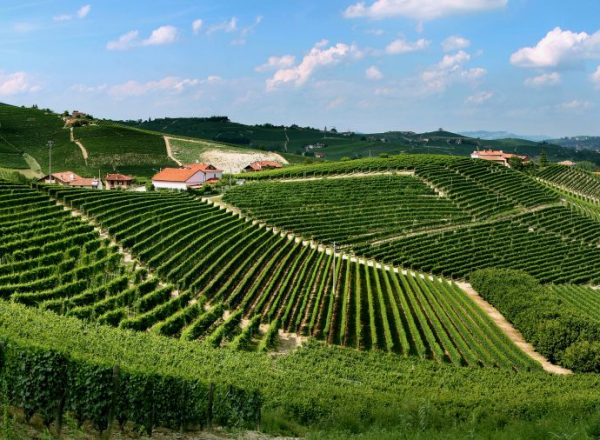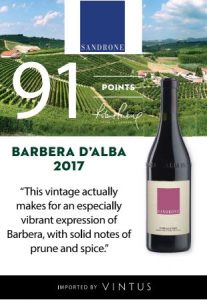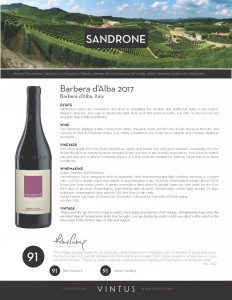
Sandrone
Barbera d’Alba 2017
Barbera d'Alba
Barbera is a delicate and demanding grape varietal. A meticulous search throughout the area for the very best soils, agronomical decisions and particular attention to vinification enable Sandrone to reveal the very best qualities of this wine. Barbera d’Alba is made to be a medium-weight wine that will drink well for a decade. It shows delicious and plump berry and black fruits. As Barbera possesses almost no natural tannins, the use of tonneaux gives the wine some much-needed structure. It is a perfect match with rich winter dishes as the bright acidity keeps it from being too heavy.
VINEYARD
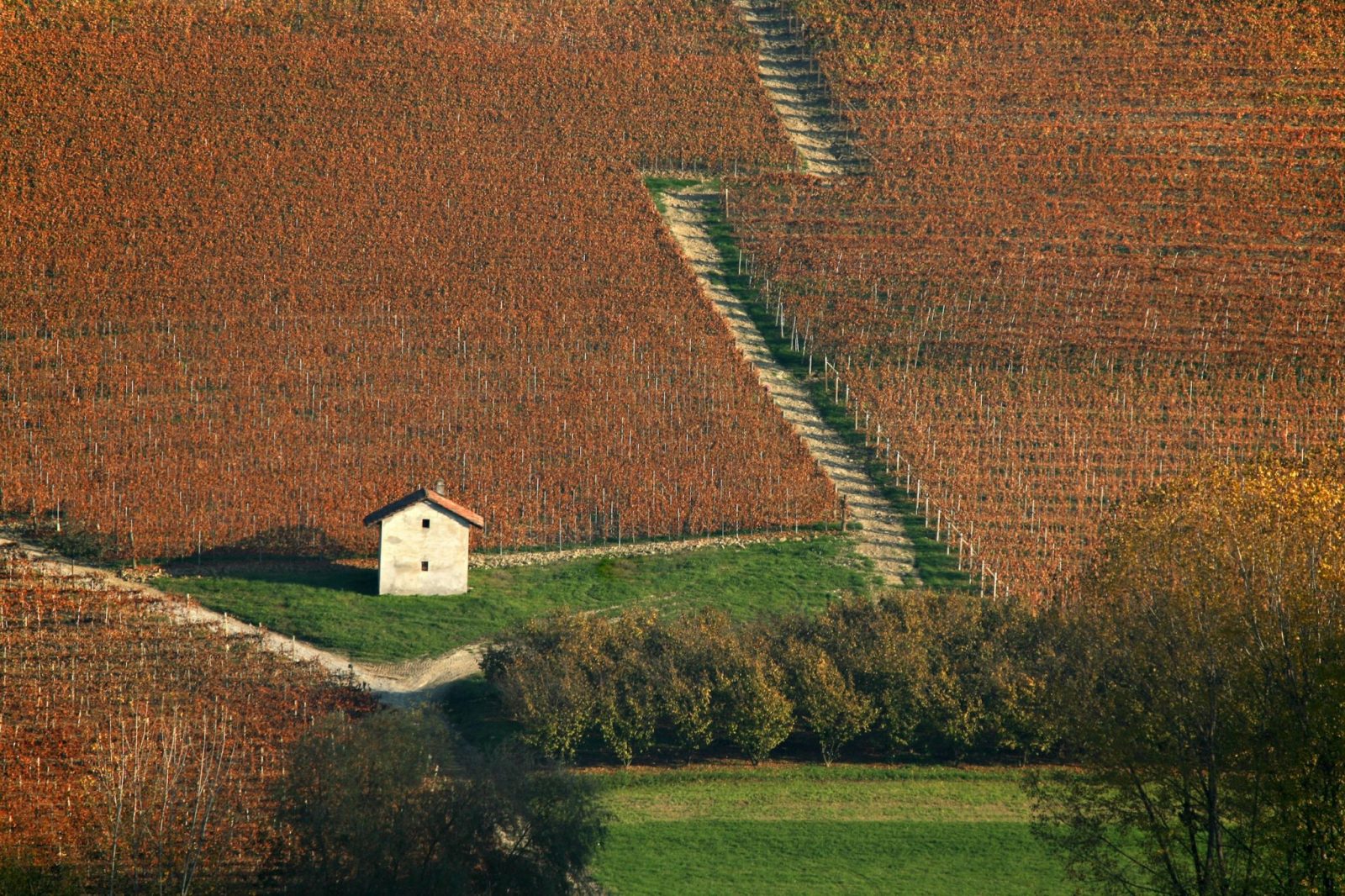
The Sandrone Barbera d’Alba comes from three vineyards: Merli and Rocche di San Nicola in Novello, and Cascina Pe Mol in Monforte d’Alba. The Sandrone section of the Merli is a south-southwest facing bowl that catches the afternoon light perfectly. The wines made from here are earthy and robust, but with good aromatic complexity. Rocche di San Nicola is an extremely steep vineyard at the very end of the Novello promontory, just above the tall clay cliffs that plunge down to the streambed that flows toward Monchiero. It receives incredible sun and heat and is almost constantly breezy; it is thus perfectly situated for Barbera, which thrives in these conditions. The crumbling farmhouse (cascina) of Pe Mol sits at the top of the ridge leading from Monforte d’Alba to the hamlet of Perno and is among the highest vineyards in the region. Because it sits at the top of the ridge, it is unsuitable for Nebbiolo, a fickle plant which abhors windy conditions. At the top of the ridge, Barbera thrives, and slightly down the slope are excellent plantings of Dolcetto. From this lofty perch one can see the Monte Bianco, the Monte Rosa and the Cervino on a clear day (Mont Blanc, Monte Rosa and the Matterhorn, respectively).
WINEMAKING
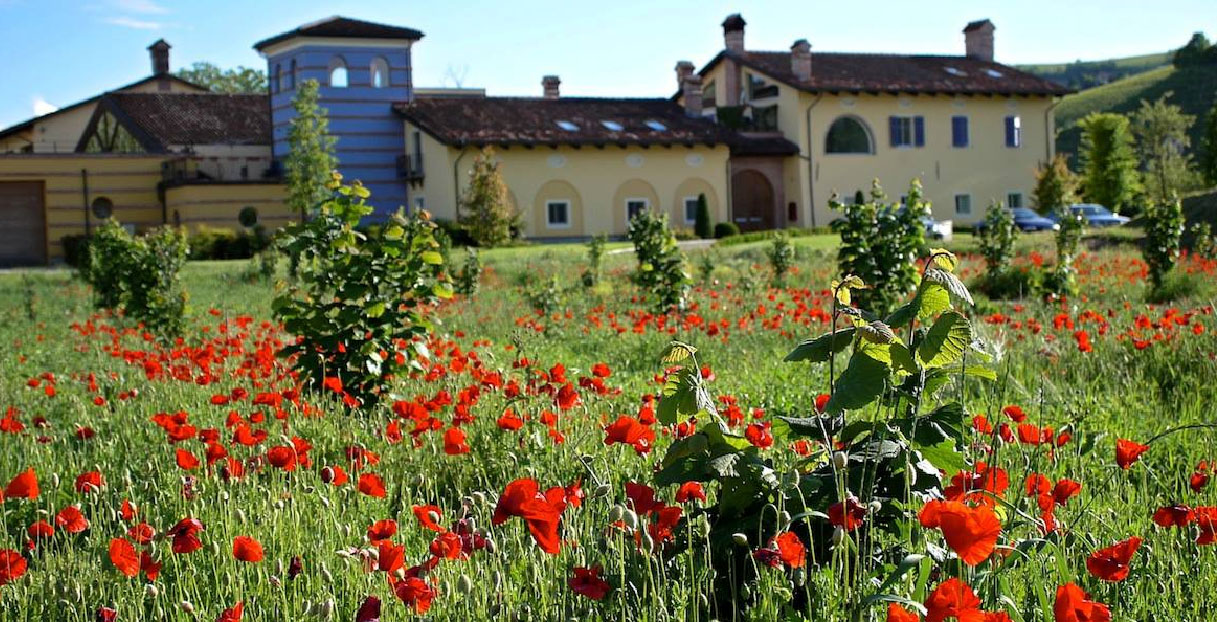
Each vineyard is vinified separately. After destemming and light crushing, the must is covered with CO2 for a gentle warm maceration of approximately a day. Alcoholic fermentation begins about 24-36 hours later from native yeasts. A gentle maceration takes place in upright open-top steel tanks for the first 8-10 days of alcoholic fermentation. Immediately after alcoholic fermentation, which takes around 20 days, malolactic fermentation takes place in 500 liter French oak casks. The wine is aged in these casks for 12 months, followed by 9 months bottle aging. Around 1,800 cases are produced in a typical vintage.
VINTAGE
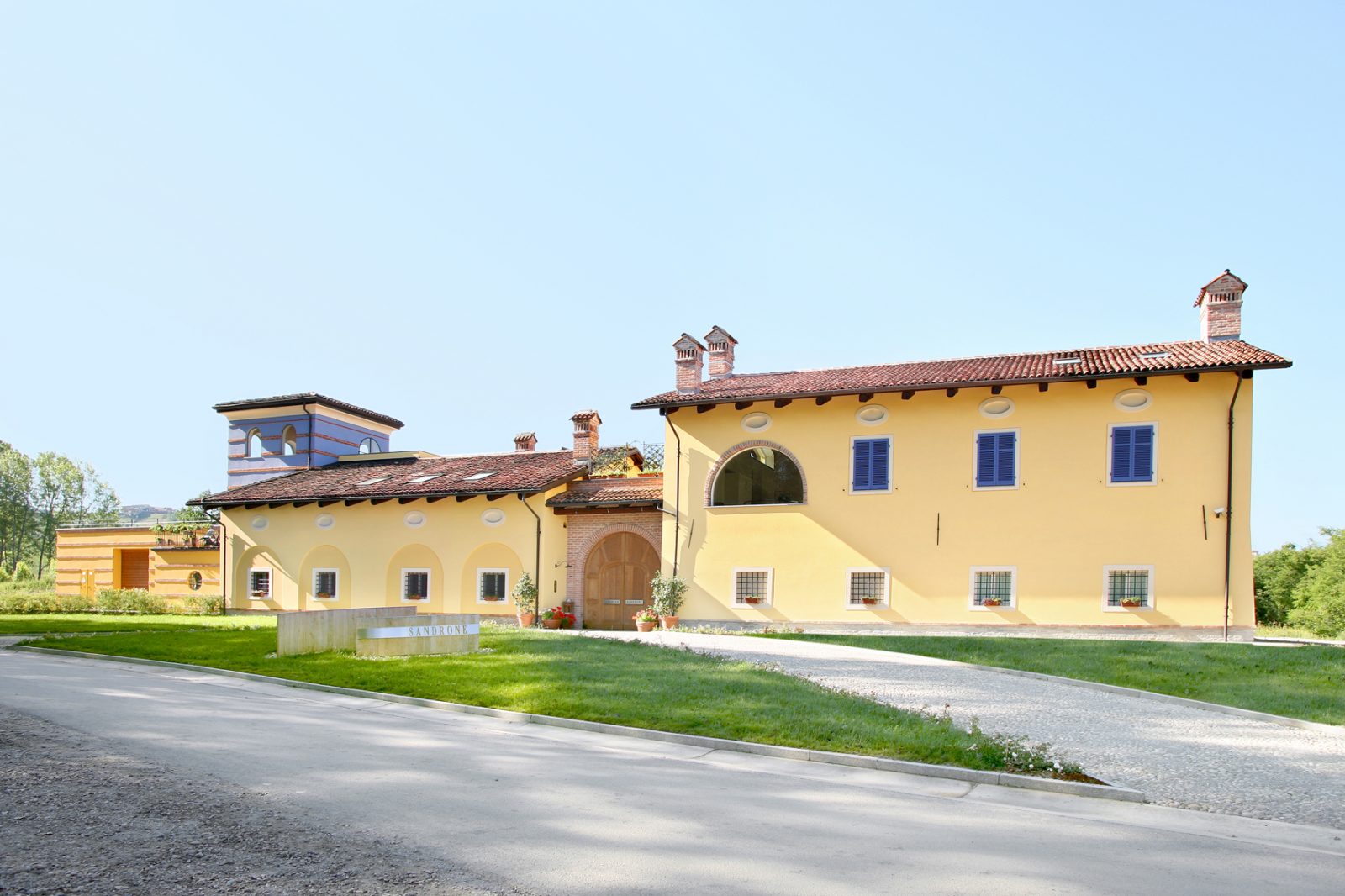
“Warm and dry” are the best words to briefly and clearly describe the 2017 vintage. Alleviating the heat were the excellent diurnal temperature shifts that brought cool air during the night, which provided a little relief to the vines even in the hottest days of July and August.
The mild winter led to early bud break. But, in an atypical return of cold in mid-April, the vegetative cycle was slowed by very cold temperatures which which even brought frost to the valley floors. During the periods of pre-flowering and flowering, the cold clearly determined the formation of the grape bunches, leading to looser bunches with better internal air circulation. After May 16 the vegetative cycle was defined by the hot, dry weather that remained until the end of August. The high-pressure zone that formed over Europe for the entire summer led to early maturation.
The summer, warm and dry but with good diurnal temperature shifts, defined the ripening of the grapes. In particular, the veraison was very early, even compared to other early vintages.
Starting from the first week in September, temperatures dropped appreciably, and growing patterns were nearer seasonal averages, with considerable differences between day and night temperatures. This situation was further helped by the polyphenolic profile of the red wine grapes with a medium-long vegetative cycle, such as Nebbiolo and Barbera, for which the data differed to those recorded in other “hot” vintages. As a matter of fact, the values observed this year are better in terms of both quantity – accumulation of anthocyanins and tannins – and extractability, an essential factor in wines for ageing.
In short, the cycle was early this year, but the vine was able in any case to enjoy a full development cycle.
The lower yield recorded in the vineyard is in keeping with a year in which there was sparse rainfall.
Based on recorded data, this vintage can certainly be remembered as one of the earliest of recent years, given that the picking of the nebbiolo grapes began in the middle ten days of September, and ended early in October, around two weeks earlier than the norm.
The 2017 vintage has given us wines showing great promise considering the fears of the beginning of summer, confirming once more how well-suited and well-equipped the hills of the Langhe are for winegrowing.
The harvest took place from September 4th until 7th.
TASTING NOTE
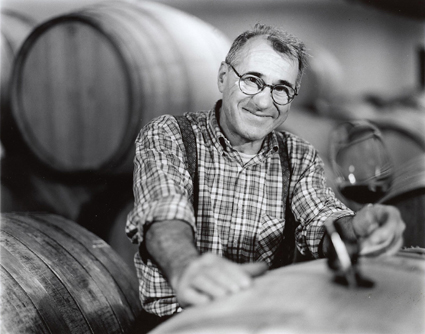
Barbera loves heat, and 2017 delivered the heat in spades. This is THE typical Barbera d’Alba wine. Ripe, spicy black fruit nose with deep oak, framing a core of pure black berries and plums along with a very deep purple-black color. In the mouth, the wine is all dark fruits. This shows blackberries and raspberries, with a chocolate and cocoa powder midpalate and hints of cassis. Concentrated, generous and mouth-filling.
The high natural acidity of Barbera gives freshness and balance to the exuberant fruit. Long sweet finish.
Color
Red
Appellation
Barbera d'Alba
Farming
Follows organic farming but has chosen not to seek certification. Minimal quantities of Bordeaux mixture and sulfur (as allowed per organic practices) are used to control mold and fungus, and fertilization every 4-6 years occurs with composted manure from dairy cows.
Alcohol
14.0%
Suggested Retail Price
$43.00
Reviews
"Succulent and delicious"

James Suckling - November 12, 2019 "Succulent and delicious with lots of dark chocolate and blackberry aromas and flavors. Medium body. Soft texture."
"Especially vibrant expression"
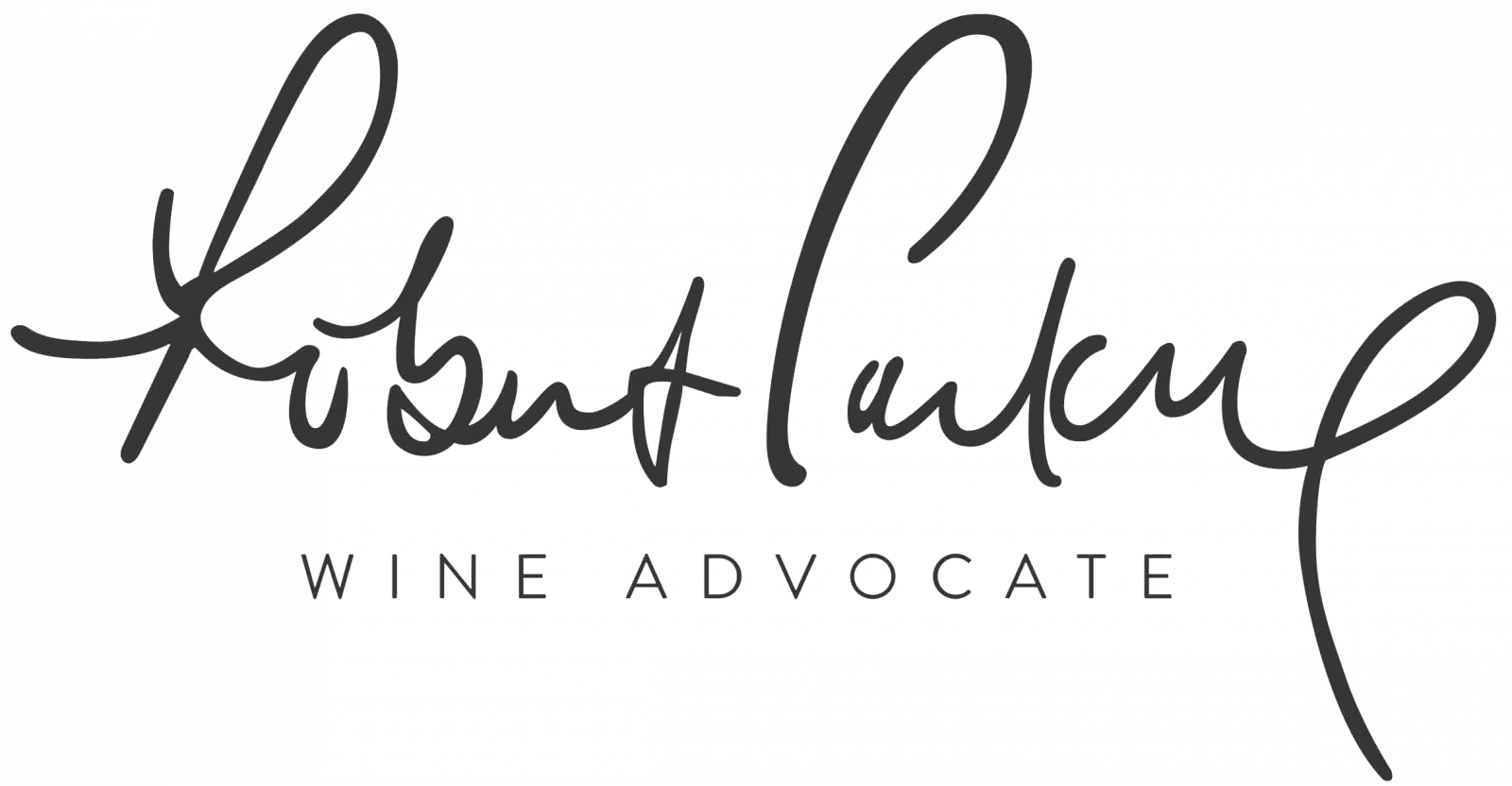
Wine Advocate - November 13, 2019
"The 2017 Barbera d'Alba is a child of a hot vintage, and there's no missing its correspondingly sweet and dark fruit flavors. This vintage actually makes for an especially vibrant expression of Barbera, with solid notes of prune and spice. The fruit comes from parcels between Monforte d'Alba and Novello, from higher elevations where there is more wind and coolness. There is a pretty sweetness here and a nice balance and freshness considering the heat. You might pair this one with a beef-and-beet borscht topped with sour cream and dill."
"Loaded with character"

Jeb Dunnuck - March 27, 2020 "Even better, the 2017 Barbera boasts a saturated purple color as well as a ripe, powerful, undeniably sexy bouquet of mulled blueberries, candied violets, orange blossom, and cedary spices. Rich, medium to full-bodied, and opulent on the palate, it still has good overall freshness, ripe yet present tannins, and a great finish. You certainly see the warmer, Mediterranean style of the vintage and this puppy is loaded with character. Drink it any time over the coming 3-5 years."
Trade Materials
Other Wines by this Producer

Dolcetto d’Alba
Dolcetto d'Alba
Sandrone's Dolcetto d’Alba is produced using Dolcetto grapes from 11 different vineyards, all within the Barolo DOCG. Sandrone’s Dolcetto sees no time in wood and is a remarkably robust and complex example of the variety.

Le Vigne Barolo
Barolo
Le Vigne is a wine created from four different Nebbiolo vineyards, each of which brings its own contribution. This union generates an exceptionally complex wine that is round and harmonious on the palate, with fruity and spicy notes, and this approach of blending together plots is in fact the traditional one in Barolo.

Valmaggiore
Nebbiolo d'Alba
Valmaggiore is the product of Luciano’s incredible passion for the Nebbiolo grape variety and its different expression. Just 15 miles away from Barolo, in the Roero region, Nebbiolo produces a lighter structure and ripe, smooth tannins that are not unlike those of Pinot Noir. This is not a “baby Barolo” or a second wine at all – it is a distinct interpretation of Nebbiolo from a completely distinct geographic zone.
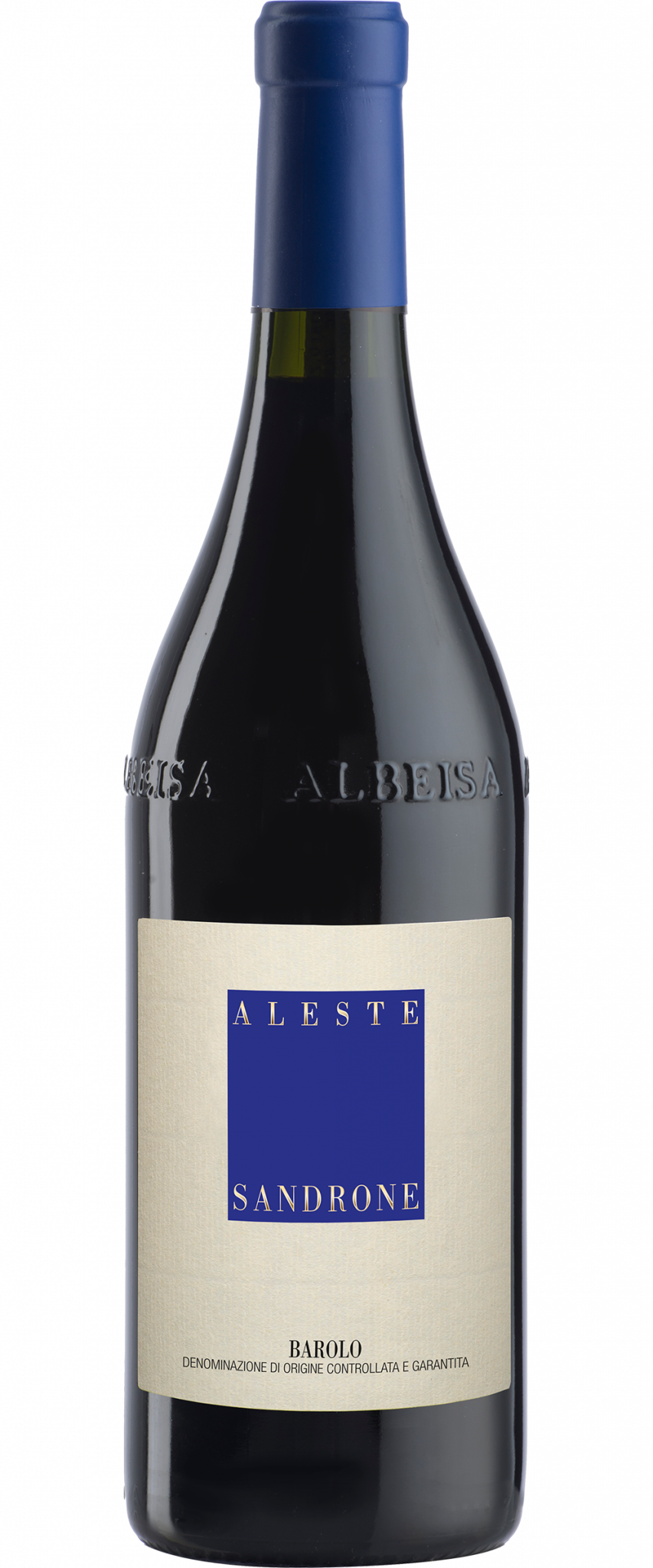
ALESTE Barolo
Barolo
A combination of the names of Luciano Sandrone's grandchildren ALEssia and STEfano, ALESTE is the new name for Luciano's first wine, the Barolo Cannubi Boschis, which garnered early acclaim with the international trade and press. This single-vineyard wine is typically dense and concentrated, but shows incredible harmony and balance.
